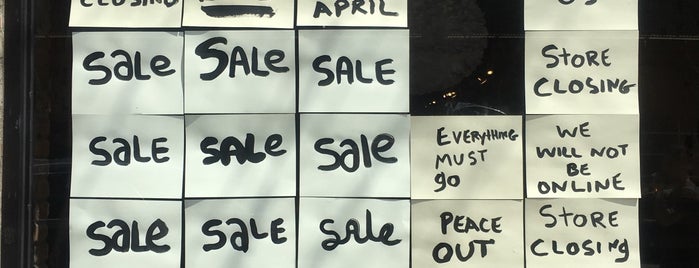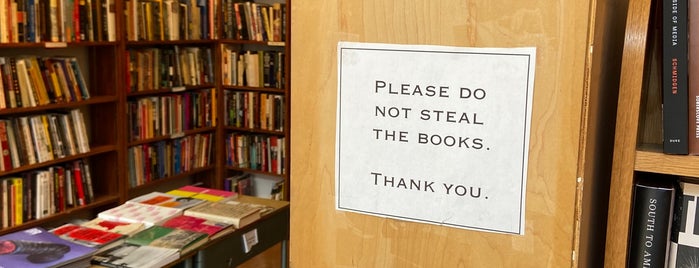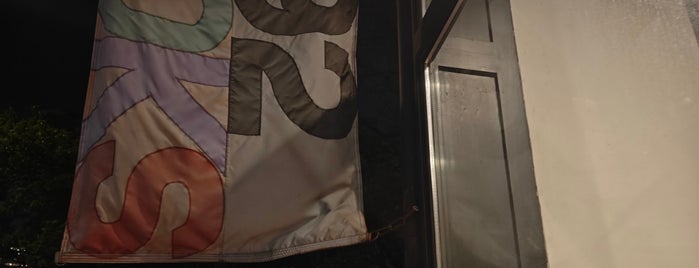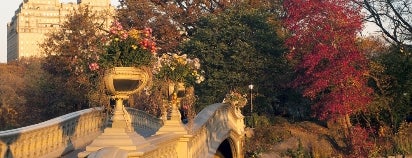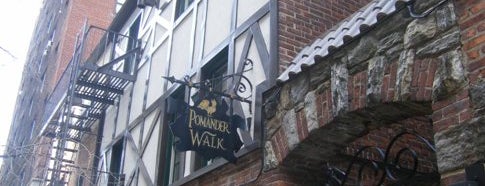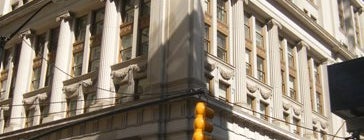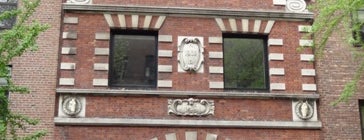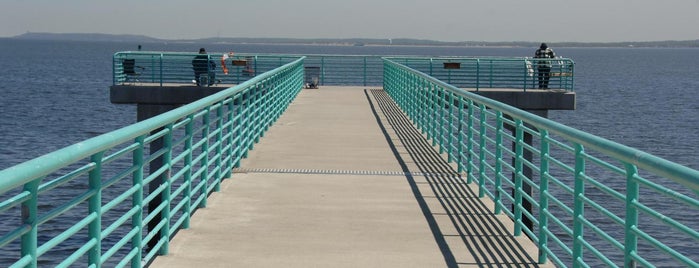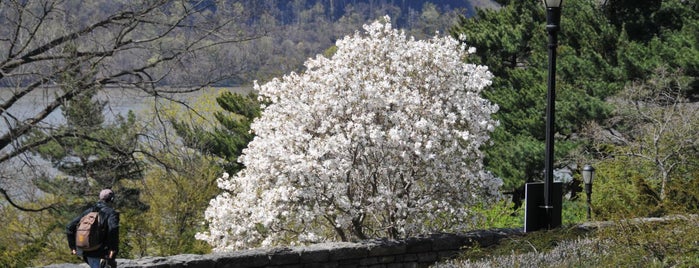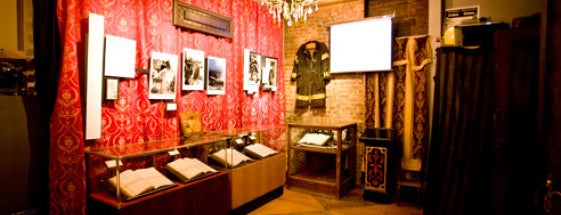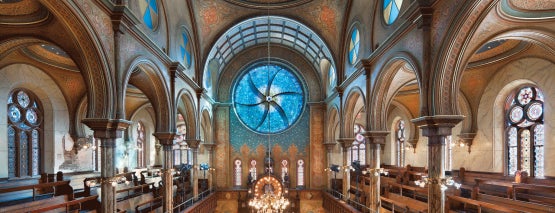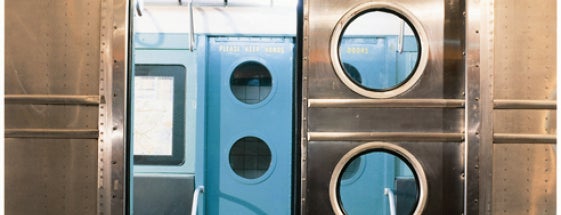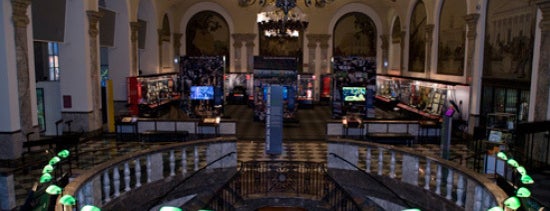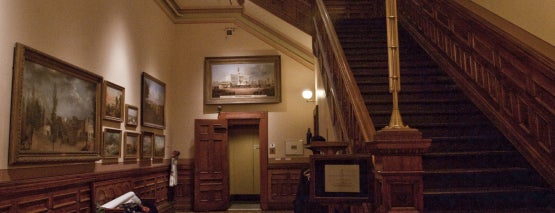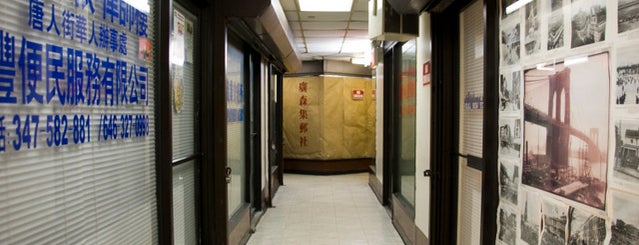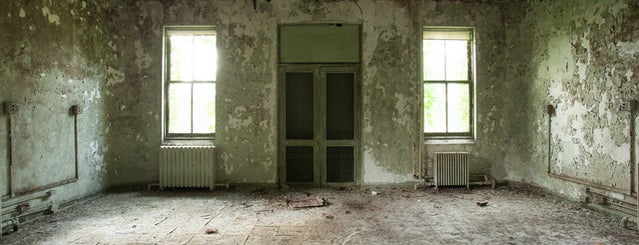![]() This limestone fortress is former HQ of JP Morgan. Site of Wall St Bombing in 1920. Check out shrapnel damage (still visible on exterior) to the left of front door (if facing it). More via our blog Read more.
This limestone fortress is former HQ of JP Morgan. Site of Wall St Bombing in 1920. Check out shrapnel damage (still visible on exterior) to the left of front door (if facing it). More via our blog Read more.
![]() Former site of Tontine Coffee House, NY Stock Exchange & Regent Wall St Hotel (when Manchurian Candidate remake filmed). Greek Revival structure. Ionic columns carried in via oxen. More info via blog. Read more.
Former site of Tontine Coffee House, NY Stock Exchange & Regent Wall St Hotel (when Manchurian Candidate remake filmed). Greek Revival structure. Ionic columns carried in via oxen. More info via blog. Read more.
![]() 1st public landscaped park in US. Designed by Calvert Vaux & Frederick Law Olmsted in 1858. 843 acres. More gun powder used in blasting limestone quarries than Battle of Gettysburg. More info in blog Read more.
1st public landscaped park in US. Designed by Calvert Vaux & Frederick Law Olmsted in 1858. 843 acres. More gun powder used in blasting limestone quarries than Battle of Gettysburg. More info in blog Read more.
![]() A tiny Tudor village that is reminiscent of old London mews. Based upon homes recreated from 20th century play of the same name. Humphrey Bogart once lived here. Learn more via our blog. Read more.
A tiny Tudor village that is reminiscent of old London mews. Based upon homes recreated from 20th century play of the same name. Humphrey Bogart once lived here. Learn more via our blog. Read more.
![]() Completed in 1923 as the HQ of AT&T (who remained here until 1984). Exterior has 198 Doric columns. Building maintains the highest usage of marble of any building in NYC. More info in our blog Read more.
Completed in 1923 as the HQ of AT&T (who remained here until 1984). Exterior has 198 Doric columns. Building maintains the highest usage of marble of any building in NYC. More info in our blog Read more.
![]() Constructed in 1719 of yellow brick imported from Holland. Originally named the Queen's Head tavern in an open jab at the British monarchy during the Revolution. Learn more about the site via our blog Read more.
Constructed in 1719 of yellow brick imported from Holland. Originally named the Queen's Head tavern in an open jab at the British monarchy during the Revolution. Learn more about the site via our blog Read more.
![]() On a clear day from the pier at Lemon Creek Park, you can look all the way across the Raritan Bay. Read more.
On a clear day from the pier at Lemon Creek Park, you can look all the way across the Raritan Bay. Read more.
![]() For a great year-round view, visit Oakland Lake, a 15,000-year-old spring-fed glacial kettle pond located in Alley Pond Park. Read more.
For a great year-round view, visit Oakland Lake, a 15,000-year-old spring-fed glacial kettle pond located in Alley Pond Park. Read more.
![]() The breathtaking view from Linden Terrace and the nearby Heather Garden makes Fort Tryon Park a must-see for all NYC visitors and locals. Read more.
The breathtaking view from Linden Terrace and the nearby Heather Garden makes Fort Tryon Park a must-see for all NYC visitors and locals. Read more.
![]() A remnant from a long-forgotten Gotham, the wooden brick is from the last-known wooden sidewalk in Brooklyn, which ran along Greenpoint’s West Street in the 19th century.
Read more.
A remnant from a long-forgotten Gotham, the wooden brick is from the last-known wooden sidewalk in Brooklyn, which ran along Greenpoint’s West Street in the 19th century.
Read more.
![]() The fourth floor served as the home and work space for four Irish maids and still contains its original furnishings, including clothesline hooks over the doors, the call bell and a coal stove. Read more.
The fourth floor served as the home and work space for four Irish maids and still contains its original furnishings, including clothesline hooks over the doors, the call bell and a coal stove. Read more.
![]() This erstwhile house of worship first opened in 1887 for newly settled Jewish immigrants, but thanks to a tremendous restoration effort, the Museum at Eldridge Street is looking as good as new today. Read more.
This erstwhile house of worship first opened in 1887 for newly settled Jewish immigrants, but thanks to a tremendous restoration effort, the Museum at Eldridge Street is looking as good as new today. Read more.
![]() Before it housed transportation artifacts, this institution was a functioning IND stop. Built in 1936, it was part of a three-block shuttle to Hoyt-Schermerhorn, but was decommissioned in 1946. Read more.
Before it housed transportation artifacts, this institution was a functioning IND stop. Built in 1936, it was part of a three-block shuttle to Hoyt-Schermerhorn, but was decommissioned in 1946. Read more.
![]() Before One Wall Street, this was the HQ of The Bank of New York. MoAF took over, opening on the ground-floor space in 2008 and becoming the second tenant in that spot in the building’s history. Read more.
Before One Wall Street, this was the HQ of The Bank of New York. MoAF took over, opening on the ground-floor space in 2008 and becoming the second tenant in that spot in the building’s history. Read more.
![]() This Brooklyn Heights institution’s library is filled with upwards of 2,000 maps and 60,000 photographs. More than 100 boxes are devoted to records from the Bureau of Sewers. Read more.
This Brooklyn Heights institution’s library is filled with upwards of 2,000 maps and 60,000 photographs. More than 100 boxes are devoted to records from the Bureau of Sewers. Read more.
![]() When you visit the oldest farmhouse in Manhattan, ask to see the still-visible board used for nine men’s morris, a strategic game dating back to the Roman Empire. Read more.
When you visit the oldest farmhouse in Manhattan, ask to see the still-visible board used for nine men’s morris, a strategic game dating back to the Roman Empire. Read more.
![]() The intrepid explore inside the crumbling officer's quarters but also look out for what the soldiers carved into the walls of the forts. See more at: Read more.
The intrepid explore inside the crumbling officer's quarters but also look out for what the soldiers carved into the walls of the forts. See more at: Read more.
![]() Castles? In New York? Why, yes! These ruins are a must, built by the Bannerman family as warehouse facility for their military surplus business in 1901. Get there by boat or kayak, tours available. Read more.
Castles? In New York? Why, yes! These ruins are a must, built by the Bannerman family as warehouse facility for their military surplus business in 1901. Get there by boat or kayak, tours available. Read more.


